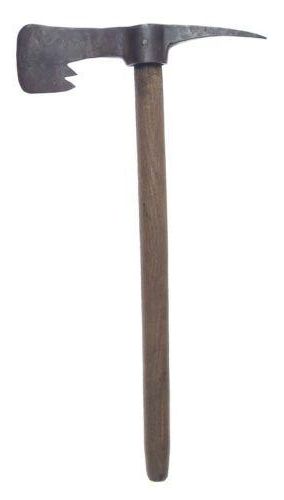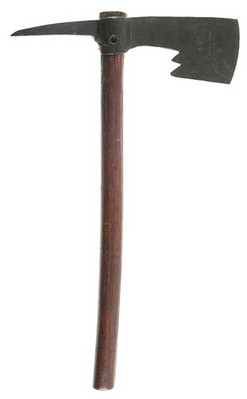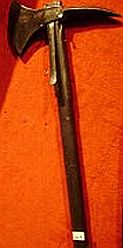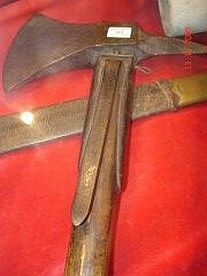The 16th thru 19th centuries saw the culmination of the Naval Boarding Ax and Boarding Pike as vital defensive and offensive personal weapons as part of the inventory of a man-of-war. Both of which became obsolete by the beginning of the 20th century due to the advent of steel ships, small highly accurate personal multi-round firearms such as pistols and rifles, and of course highly accurate large-bore short and long-range naval artillery which would prevent close-quarter boarding.
From the Spanish American War onward there no longer came the need or even opportunity to board other vessels by climbing up the bulging wooden sides using the boarding ax, or the need to pick out "hot shot" rounds from wooden timbers and masts, or to drag and cut away ropes and sails taken down by canon fire, or to use the boarding ax to hack away or throw at an opponent.
Just as the enlisted naval cutlass was specially designed for close quarter combat by an ordinary seaman aboard a fighting vessel, as opposed to its landbased bretheren the sword; so was the naval boarding axe and naval boarding pike differentiated from its cousins the landbased military battle-axe and the halberd or pike.
Authentic 100+ Year Old Nautical Antique Trunks
The Real Deal! Fully Restored Antique Trunks Like Sea Chests, Pirate Chests, Treasure Chests! |
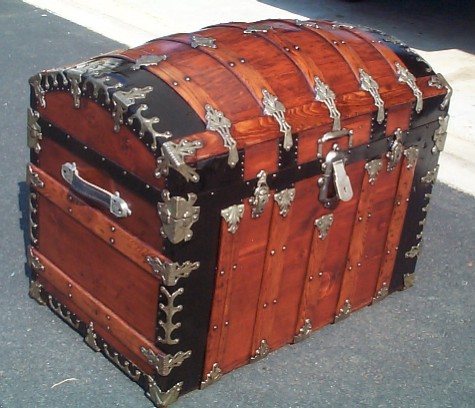
Click Here To Review Sample Engravings |
The Largest Selection of Antique Trunks on the Net to Choose From! |
OPTIONAL - Trunk Wood Engraving Examples and Prices
Custom Designed, Handcrafted, and Hand Lettered in Caligraphy on your Antique Chest |
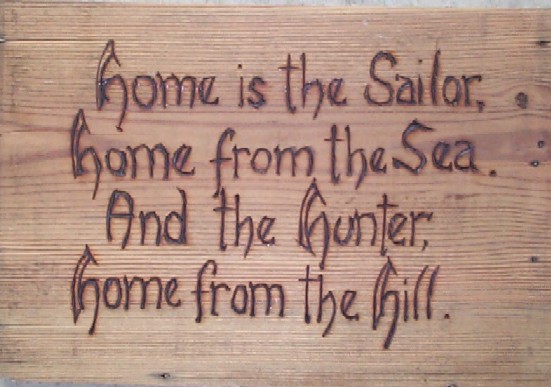
Click Here To Review Sample Engravings |
Personalize Your 100+ Year Old Antique Trunk in Perpetuity! |
Antique Trunks as a Shadow Box and Storage Chest!
Customer Photographic Examples of our Antique Trunks Being used as a Military or Naval Retirement Shadow Box and Storage Chest!! |
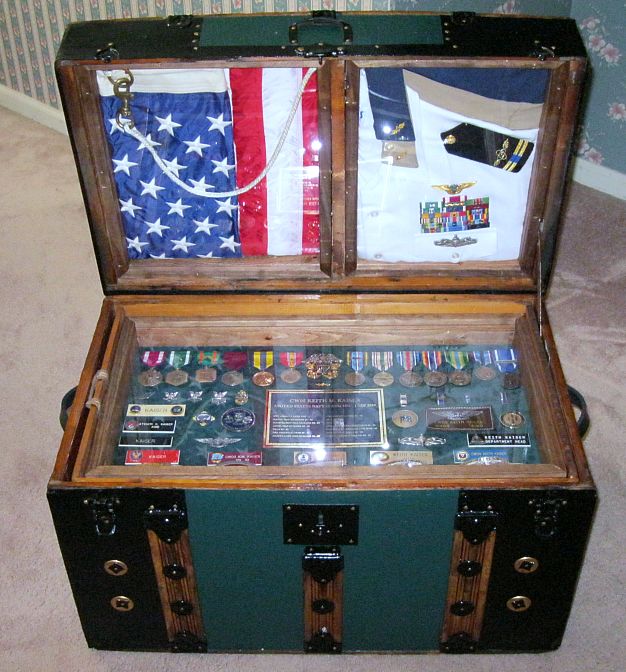
Click Here for Sample Shadow Box Photographs From Customers |
Why just get a shadow box or a newly made trunk with no history! One of our 100+ Year Old Nautical Antique Trunks can be used for both a Shadow Box and Storage Chest for your Uniforms, Photograph Albums, and Memorabilia! |
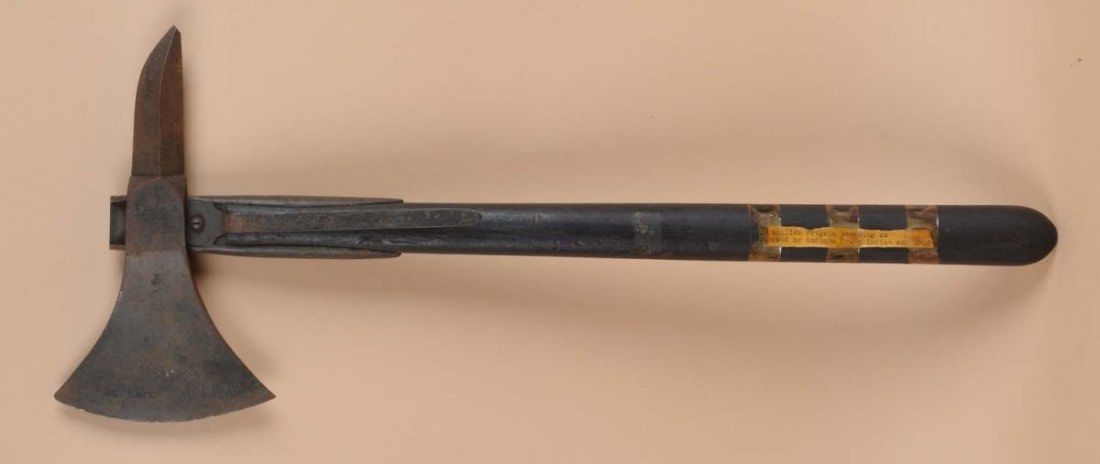




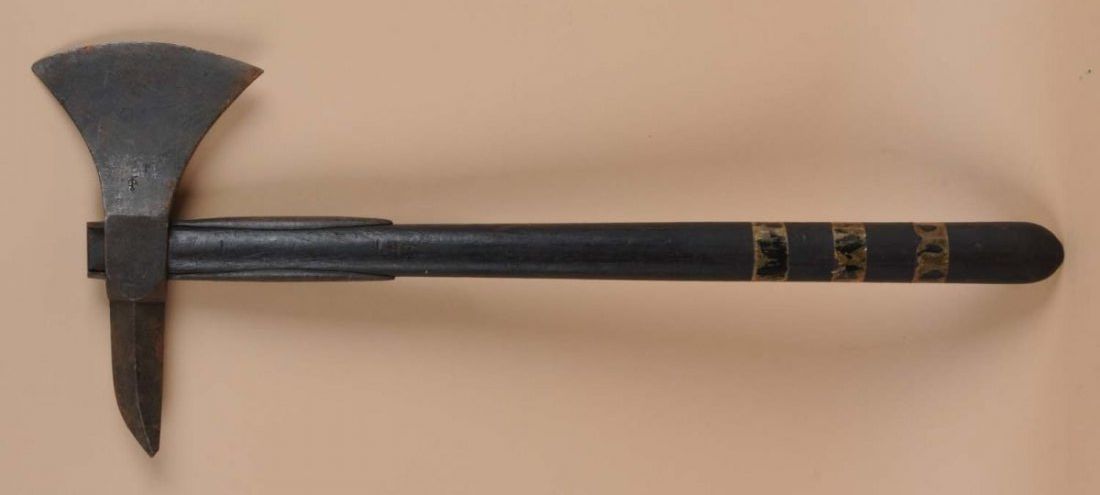
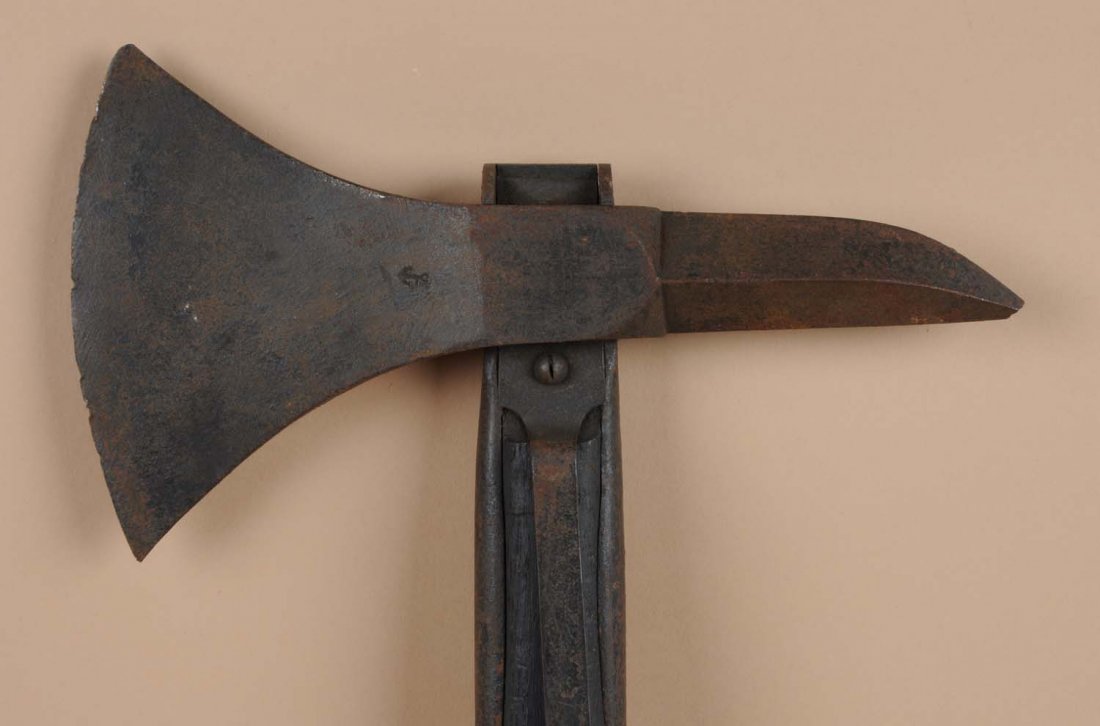
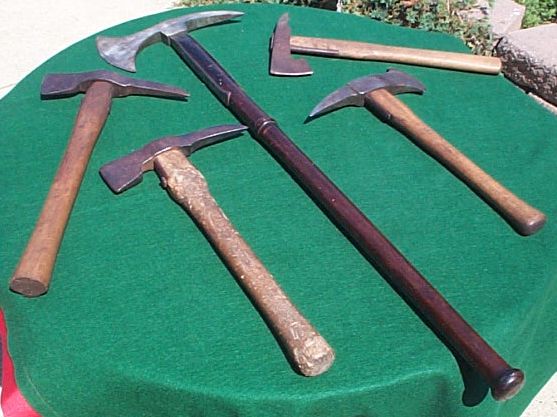 Photo to the left illustrates a partial collection and representation of Scandinavian, European and British naval boarding axes from the 18th and 19th centuries. The Scandinavian and French boarding ax are very similar and distinctive with wide flaring blades and curved spikes, while the British boarding ax has a more traditional hatchet-type smaller blade and slightly straighter spike.
Photo to the left illustrates a partial collection and representation of Scandinavian, European and British naval boarding axes from the 18th and 19th centuries. The Scandinavian and French boarding ax are very similar and distinctive with wide flaring blades and curved spikes, while the British boarding ax has a more traditional hatchet-type smaller blade and slightly straighter spike.
